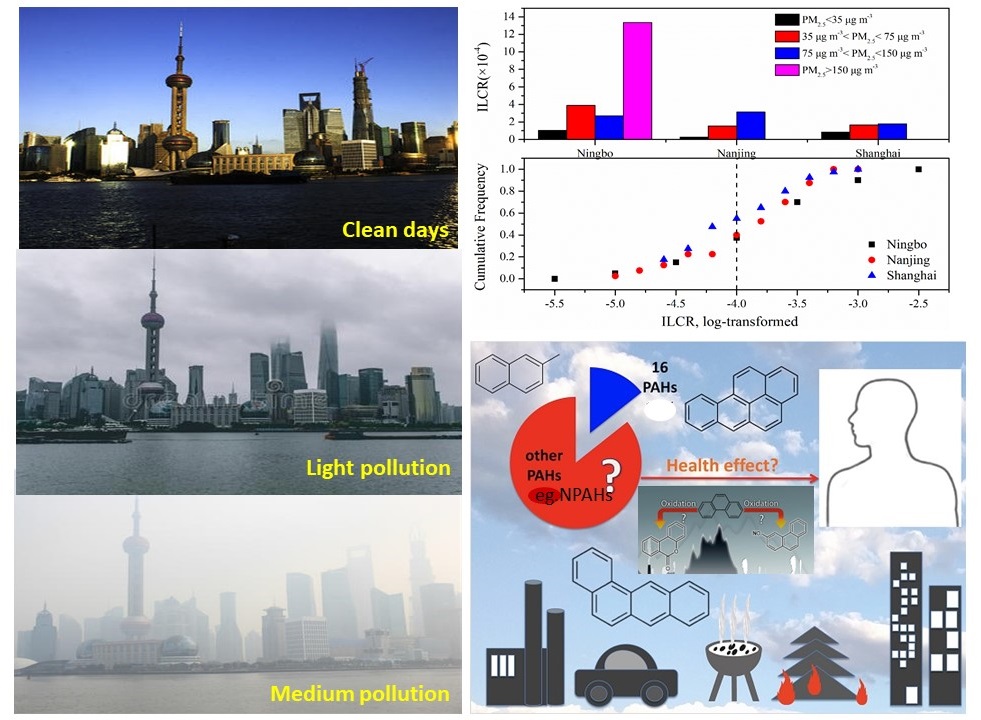Air pollution due to fine particulates (PM2.5) is globally increasing the relative risk of mortality from cerebrovascular disease, lung cancers, and chronic respiratory diseases. However, an emerging challenge is to understand the relationship between active components of PM2.5 and human health. Polycyclic aromatic hydrocarbons (PAHs) was considered as an essential toxic component of PM2.5. With the increase of atmospheric oxidizing capacity, more derivatives of PAHs such as nitrated PAHs (NPAHs) were detected, resulting in high potential human health risks. This work was published in Science of The Total Environment.
To improve the understanding of the sources and human health risks of PM2.5-bound toxic organic pollutants under different PM2.5 pollution level, the research teams led by Prof. CHEN Jinsheng and Assoc Prof. HONG Youwei with the Center for Excellence in Regional Atmospheric Environment, Institute of Urban Environment, Chinese Academy of Sciences and Prof. SUNG-Deuk Choi with the Ulsan National Institute of Science and Technology (Republic of Korea) performed simultaneous collection of PM2.5 samples in three cities (including Shanghai, Nanjing and Ningbo) of the Yangtze River Delta, China.
"With the elevated PM2.5 level, the percentage of 4-ring PAHs and typical NPAH including 3-Nitrobiphenyl (3-NBP) and 2-Nitrofluoranthene (2-NFLT) increased by 19-40%. 2-NFLT was positively correlated with O3 and NO2, suggesting that atmospheric oxidation capacity promoted the secondary formation of NPAHs in PM2.5. " said Prof. CHEN.
The team further complemented sources apportionment with positive matrix factorization (PMF) model analyses, and found that traffic emissions (44.9-48.7%), coal and biomass combustion (27.6-36.0%) and natural gas and volatilization (15.3-27.5%) were major sources of PAHs, and secondary formation (39.8-53.8%) was a predominant contributor to total NPAHs concentrations. Prof. CHEN said, "Backward trajectory analysis showed that air masses from North China increased the concentrations of PM2.5-bound PAHs and NPAHs in the YRD region. "

Occurrence, sources and human health risks of PM2.5-bound PAHs and nitro-PAHs in the Yangtze River Delta, China (Image by HONG Youwei)
The team also evaluated the Incremental Lifetime Cancer Risks (ILCRs) of PAHs by inhalation exposure. " Compare to clean days, the BaP equivalent concentrations of total PAHs and NPAHs during haze pollution were enhanced by 10-25 and 2-6 times, respectively." Concluded Prof. HONG. "Our results show that human health risks of PM2.5-bound PAHs and NPAHs will be sharply enhanced during haze events, and therefore we advocate taking effective measures for emissions control and wearing a mask or reducing outdoor activities."